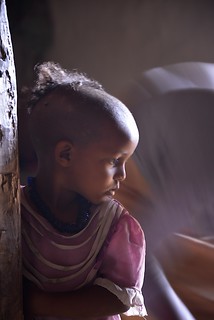Ethiopian Adoption Background
In recent years, Ethiopia has become a popular country for international adoption. Between 1999 and 2013, Americans have adopted 14,084 children from Ethiopia. Beginning in March 2010, however, adoption numbers dropped off significantly as Ethiopia placed greater restrictions on adoption by foreigners. These restrictions were due to charges of direct recruitment of children from birth parents by adoption service providers or their employees, abuse and other adoption related fraud. In response to these reports, the U.S. Embassy in Addis Ababa implemented some changes to adoption visa processing.
Prior to March 2010, it was only necessary for adoptive families to make 1 trip to Ethiopia; now families must make 2 trips. As of May 9, 2010, adoptive parents must now appear at the federal court hearing for their adoptive child in order for the adoption to be approved. Further, in 2010 the Ethiopian government announced that 9 orphanages in different regions of the country had their licenses revoked. Those orphanages were:
- Adera child orphanage
- Agar Lewegen orphanage
- Almaz orphanage
- Biruh Zemen orphanage
- Bitania orphanage
- Help for the Needy orphanage
- Holy Savior orphanage
- Kunket orphanage
- Tsega orphanage
Children in these orphanages were moved to accredited orphanages and made available for adoption under the new regulations.
Due to the intense scrutiny from the international adoption community and the U.S. State department, processing times for orphans slowed considerably. Timelines between acceptance of referrals to actually getting the children home increased dramatically with an overall decline in case processing of up to 90%.
In August 2011, it was confirmed that an additional 8 orphanages were closed due to revocation of their licenses to operate by Ethiopian authorities. These orphanages were:
- SOS Infants Ethiopia (Arbaminch, Dilla, and Awassa branches)
- Gelgella Integrated Orphans (Tercha and Durame branches)
- Bethzatha Children’s Home Association (Sodo, Hosaena, Dilla, and Awassa branches)
- Ethio Vision Development and Charities (Dilla branch)
- Special Mission for Community Based Development (Hosaena branch)
- Enat Alem Orphanage (Awassa branch)
- Initiative Ethiopia Child and Family Support (Awassa branch)
- Resurrection Orphanage (Hosaena branch)
Children in the care of these facilities were transferred to other orphanages.
During this time of change, the U.S. Embassy continued to see cases involving abandoned children without sufficient evidence to document the abandonment and/or evidence of appropriate efforts to locate a child’s birth family. The Embassy also received evidence of unethical recruitment of children from birth relatives and cases involving known birth parents from whom parental rights had not been severed by the Ethiopian courts. In these cases, consular officers in Addis needed to take additional measures to confirm that children met the legal definition of orphan, delaying processing by at least several months.
Throughout 2012, Ethiopia gradually lifted restrictions on a few U.S. adoption services providers. In September of 2013, Ethiopia implemented the Pre-Adoption Immigration Review (PAIR) Program. For more information on PAIR go here.
Ethiopian children (particularly babies) are abandoned in public places and high traffic areas such as busy streets, railway stations, and in front of public buildings so they will be found quickly. Babies are abandoned as infants – usually when they are only a few days old. Once found, the abandoned babies are given a medical exam and then first processed at an intake center. Eventually they are sent to orphanages and care centers. Addis Ababa is the capital of Ethiopia and has the largest number of orphanages in the country.
Source: U.S. State Department.
Back to Adopting from Ethiopia
